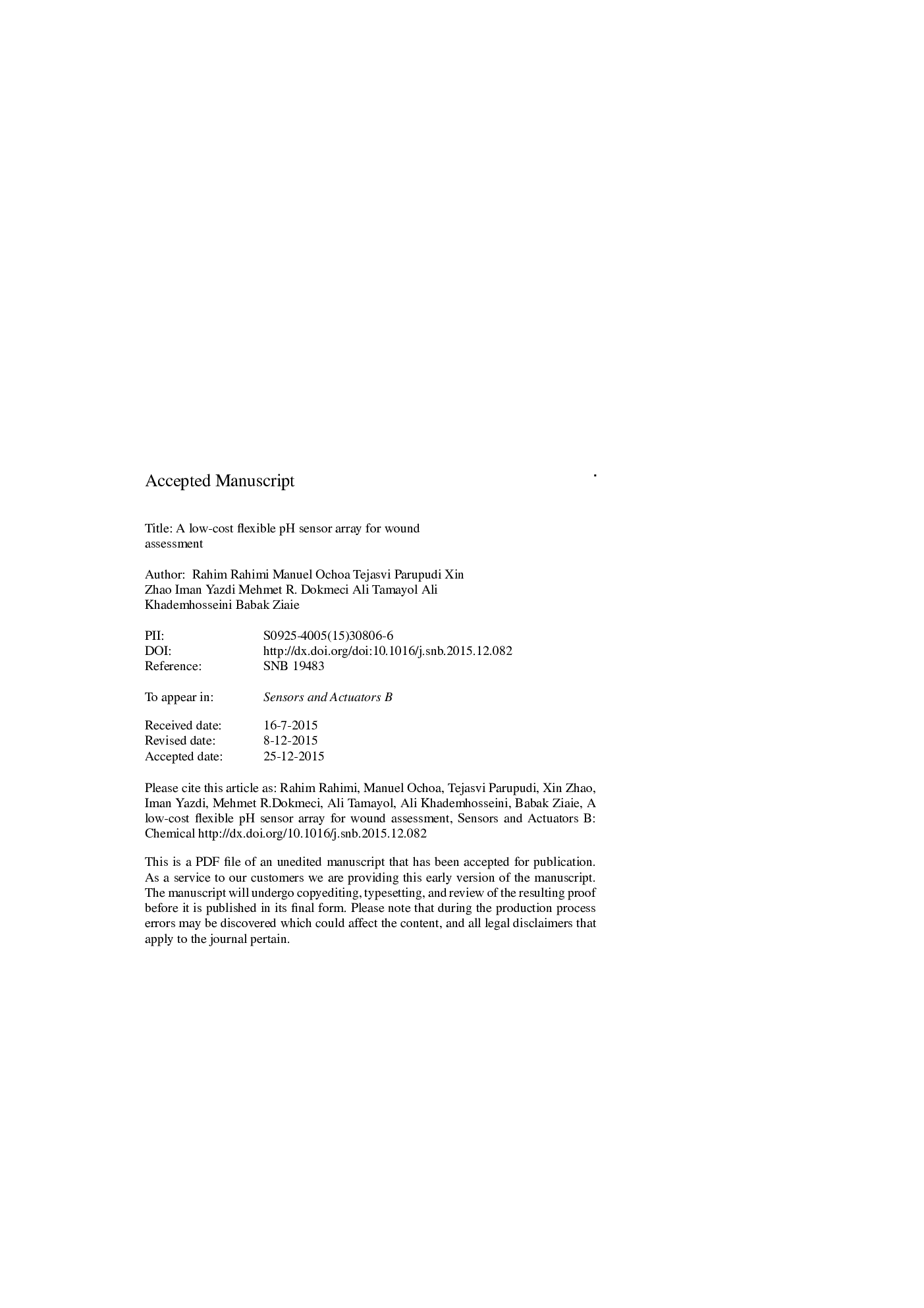| Article ID | Journal | Published Year | Pages | File Type |
|---|---|---|---|---|
| 7144422 | Sensors and Actuators B: Chemical | 2016 | 33 Pages |
Abstract
The pH level in a chronic wound bed is a key indicative parameter for assessment of the healing progress. Due to fragility and inability to measure multiple wound regions simultaneously, commercial glass microelectrodes are not well-suited for spatial mapping of the wound pH. To address this issue, we present an inexpensive flexible array of pH sensors fabricated on a polymer-coated commercial paper (palette paper). Each sensor consists of two screen-printed electrodes, an Ag/AgCl reference electrode and a carbon electrode coated with a conductive proton-selective polymeric (polyaniline, PANI) membrane. Laser-machining is used to create a self-aligned passivation layer with access holes that is bonded over the sensing and reference electrodes by lamination technology. Characterization of the pH sensors reveal a linear (r2Â =Â 0.9734) relationship between the output voltage and pH in the 4-10Â pH range with an average sensitivity of â50Â mV/pH. The sensors feature a rise and fall time of 12 and 36Â s for a pH swing of 8-6-8. The sensor biocompatibility is confirmed with human kertinocyte cells.
Related Topics
Physical Sciences and Engineering
Chemistry
Analytical Chemistry
Authors
Rahim Rahimi, Manuel Ochoa, Tejasvi Parupudi, Xin Zhao, Iman K. Yazdi, Mehmet R. Dokmeci, Ali Tamayol, Ali Khademhosseini, Babak Ziaie,
